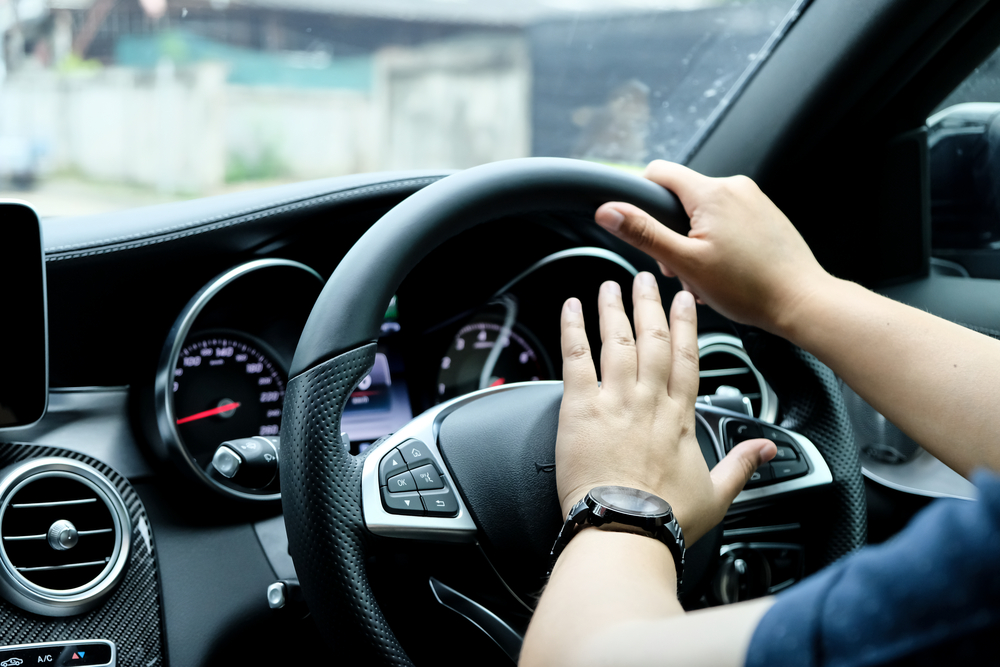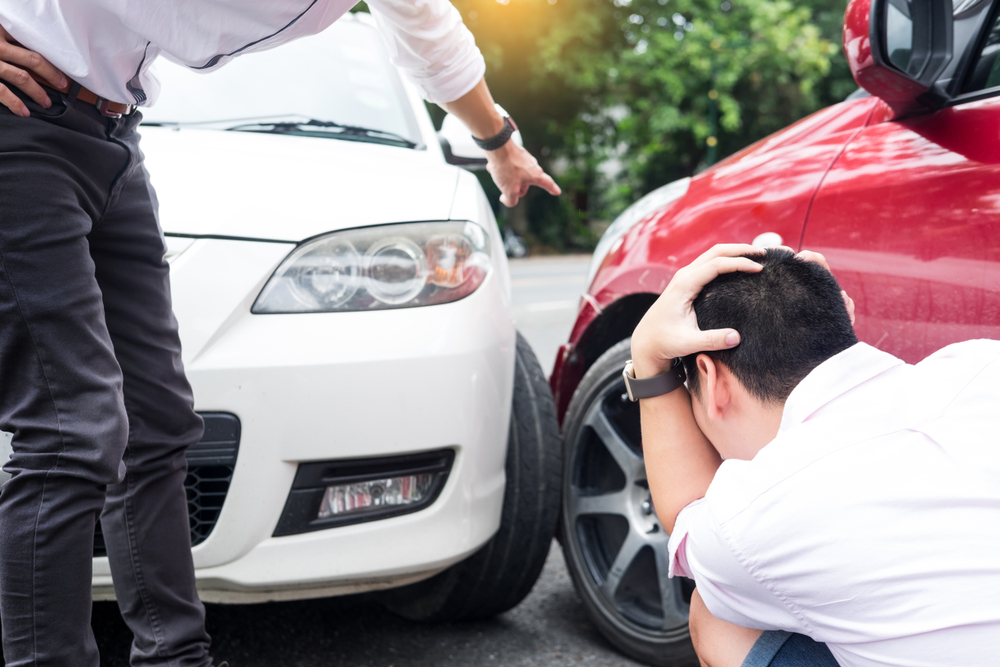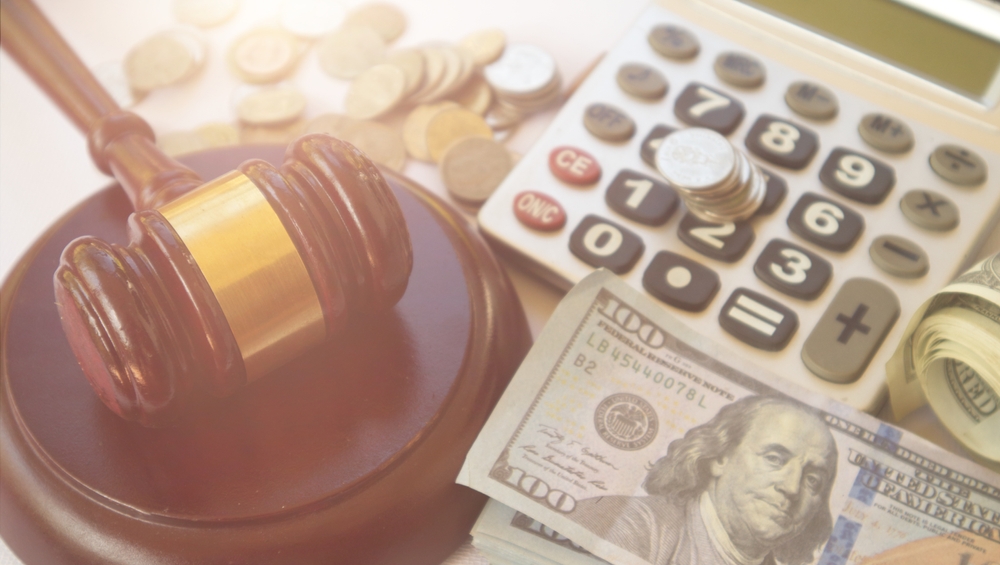In general, drivers commit acts of road rage when they respond inappropriately to a roadway situation that arises. For example, they may become upset with another driver and resort to tailgating, speeding, and committing other traffic law violations.
If you suffered injuries in a traffic accident that resulted from another driver’s road rage, you need to contact an experienced Edmonton car accident lawyer in your area right away. Your lawyer can explore your legal options and take the necessary steps to recover the compensation you need, either by way of a favourable settlement offer or litigation result in court.
Driving Maneuvers that Amount to Road Rage
Road rage manifests in various aggressive driving maneuvers that escalate tensions on the road. Tailgating, a common road rage behaviour, involves driving too closely behind another vehicle, often intimidating the driver in front. This aggressive tactic heightens the risk of rear-end collisions and contributes to a hostile driving environment.

Excessive speeding is another prevalent form of road rage. Aggressive drivers may disregard speed limits, weave through traffic, and engage in erratic maneuvers to assert dominance. Speeding intensifies the potential for accidents and endangers the safety of other drivers and passengers on the road.
Unsafe lane changes are another frequent road rage behaviour involving abrupt shifts between lanes without signalling or consideration for other drivers. Aggressive lane changes can result in sideswiping, collisions, or forced evasive actions by nearby vehicles, creating hazardous conditions.
Failure to yield is another road rage behaviour that exacerbates tensions on the road. Aggressive drivers may intentionally refuse to yield the right-of-way to others, leading to conflicts at intersections, merge lanes, or other traffic scenarios. This behaviour heightens the risk of collisions and fosters a confrontational atmosphere.
Excessive horn usage is a non-verbal form of road rage that often contributes to heightened stress on the road. Aggressive drivers may use their horns excessively, often in response to perceived slights or frustrations with other road users. Excessive honking can escalate tensions and lead to further aggressive behaviours.
Aggressive tailgating, where a driver aggressively follows another vehicle at a close distance, is also a manifestation of road rage. This behaviour creates an intimidating and unsafe driving environment, increasing the likelihood of accidents and contributing to the overall escalation of aggression on the road.
Verbal altercations and obscene gestures are common road rage behaviours involving direct confrontations between drivers. Aggressive verbal exchanges and offensive gestures escalate tensions, creating an atmosphere of hostility and increasing the risk of further confrontations.
Finally, running red lights or stop signs is a reckless road rage behaviour that poses a severe threat to other road users. Aggressive drivers may intentionally violate traffic laws, increasing the potential for high-impact collisions and jeopardizing the safety of everyone on the road.
Road rage encompasses a range of aggressive driving maneuvers, including tailgating, excessive speeding, unsafe lane changes, failure to yield, excessive horn usage, aggressive tailgating, verbal altercations, obscene gestures, and running red lights or stop signs. Each behaviour contributes to a hostile driving environment, heightening the risk of accidents and escalating tensions on the road.
Types of Car Accidents that Result from Road Rage
When drivers exhibit road rage, they can bring about various types of traffic accidents. These accidents, in turn, can lead to debilitating injuries. Some of the most common categories of accidents that result from another driver’s aggressive road rage maneuvers include:
- Rear-end accidents, where the front of the enraged driver’s vehicle hits the back of another vehicle
- Head-on collisions, where the fronts of two vehicles strike one another, sometimes causing the vehicle occupants to suffer permanent injuries or fatalities
- Sideswipe collisions, where the side of one vehicle strikes the side of a second vehicle, sometimes pushing the second vehicle completely off the road
- Intersection, broadside, or T-bone collisions, where the front of one vehicle hits the side of another vehicle, usually because the first vehicle fails to stop and yield the right-of-way to the second vehicle
If you suffered injuries in one of these types of accidents that resulted from another driver’s road rage, an experienced car accident lawyer can review the accident circumstances with you and pursue a personal injury claim on your behalf with the at-fault driver’s insurance company.
Injuries in Road Rage Accidents
Traffic accidents involving road rage from another driver can inflict a range of physical, emotional, and mental injuries on those involved. Physically, victims may suffer from whiplash, a common injury in rear-end collisions where aggressive drivers tailgate or engage in abrupt braking maneuvers. Whiplash can lead to neck pain, stiffness, and headaches, severely affecting the victim’s physical well-being and daily activities.

More severe physical injuries often result from high-impact collisions associated with road rage. These injuries may include fractures, sprains, and contusions, causing pain, limited mobility, and potential long-term health consequences. Victims may require extensive surgeries and ongoing rehabilitation to fully recover from the physical trauma inflicted during road rage-related accidents.
Emotionally, victims may also experience heightened stress, anxiety, and fear following a road rage incident. The sudden and aggressive nature of road rage behaviours can leave lasting psychological scars, affecting the victim’s overall mental well-being. Emotional distress may manifest as difficulty sleeping, nightmares, or a persistent sense of unease, affecting the victim’s daily life and mental health.
Post-traumatic stress disorder (PTSD) is another prevalent mental injury resulting from traffic accidents involving road rage. The traumatic nature of road rage incidents can trigger persistent and distressing memories, flashbacks, and emotional reactions. Victims may also face challenges in coping with the aftermath of the accident, leading to heightened stress levels and mental health struggles.
Depression is another potential consequence of road rage-related accidents. The emotional toll of the incident, coupled with physical injuries and the potential disruption to daily life, may contribute to feelings of sadness, hopelessness, and despair. Coping with the aftermath of a road rage accident can significantly affect the victim’s mental health, necessitating psychological support and intervention.
Furthermore, victims may experience a loss of confidence and trust in their ability to drive safely. The psychological effect of a road rage incident can linger, causing heightened vigilance, nervousness, and apprehension while driving. Overcoming these emotional hurdles may require time, therapy, and a supportive environment to rebuild a sense of security on the road.
Traffic accidents involving road rage from another driver can lead to physical injuries such as whiplash, fractures, and contusions. Emotional consequences may include heightened stress, anxiety, and fear, while mental injuries like PTSD and depression can have a profound effect on the victim’s overall well-being. If you suffered any of these injuries in a road rage accident, an experienced car accident lawyer can begin gathering the documentation necessary to prove your case while you attend medical appointments and get better.
How to Legally Prove Road Rage
Proving that another driver committed road rage when causing a traffic accident requires a thorough and strategic approach within the legal framework. Eyewitness testimony serves as a powerful means of establishing road rage. Witnesses who observed aggressive behaviours, such as tailgating, aggressive gestures, or verbal altercations, can provide firsthand accounts, lending credibility to the claim of road rage.
Police reports also play a pivotal role in the legal process. Officers responding to the accident scene document their observations, statements from involved parties, and any evidence of aggressive behaviour. A thorough police report that explicitly notes road rage elements establishes an official record, offering valuable support when proving road rage in legal proceedings.
Video evidence is also instrumental in legally proving road rage. Dashcam footage, surveillance videos, or recordings from nearby security cameras can capture aggressive driving maneuvers, offensive gestures, or verbal confrontations leading up to the accident. This visual evidence substantiates the claim and provides a compelling narrative of the road rage incident.
Expert witnesses, such as psychologists or behavioural analysts, may be called upon to provide professional opinions on the aggressive actions exhibited by the driver. These experts can analyze the circumstances leading up to the accident, evaluating whether the behaviours align with road rage tendencies. Their testimony adds a layer of specialized insight, further supporting the claim of road rage.
Analysis of the accident scene by accident reconstruction specialists further contributes to the legal proof of road rage. These professionals can evaluate skid marks, vehicle positions, and other physical evidence to reconstruct the sequence of events leading up to the accident. Their expertise helps establish the aggressive behaviours that contributed to the accident, strengthening the case for road rage.
Documentation of prior aggressive incidents involving the at-fault driver can also be crucial. If the driver has a history of road rage incidents, traffic violations, or confrontations, this information may serve as evidence to establish a pattern of aggressive behaviour. It further bolsters the argument that the driver’s actions leading to the accident were consistent with a history of road rage.
Finally, statements from the victims and any passengers involved can offer firsthand accounts of the aggressive actions they witnessed before the accident. Their testimony, coupled with other forms of evidence, helps build a comprehensive case that legally proves road rage is a contributing factor to the traffic accident.
Legally proving road rage in a traffic accident involves a multifaceted approach. Eyewitness testimony, video evidence, police reports, accident reconstruction analysis, expert witnesses, documentation of prior incidents, and statements from the victims collectively contribute to building a strong case that establishes road rage as a significant factor in the accident.
Recovering Financial Compensation for a Road Rage Incident
Victims of injuries resulting from another driver’s road rage are entitled to pursue various financial damages to address the extensive effect on their well-being. Compensation for mental and emotional distress acknowledges the psychological toll of the incident, providing restitution for the anxiety, fear, and emotional trauma experienced due to the road rage. This form of compensation aims to address the intangible consequences on the victim’s mental well-being.

Past and future pain and suffering damages account for the physical and emotional distress resulting from the injuries sustained during the road rage incident. This compensation acknowledges the pain endured, the lasting effects on the victim’s quality of life, and the ongoing challenges associated with recovery. It ensures that victims receive comprehensive restitution for the multifaceted toll of road rage-induced injuries.
Inconvenience damages recognize the disruptions and inconveniences caused by the injuries, encompassing the challenges in daily life, altered routines, and the need for assistance during the recovery process. This compensation seeks to address the tangible inconveniences that victims endure due to the road rage incident.
Loss of spousal consortium compensates for the adverse effects on the victim’s relationship with their spouse. The emotional and physical support, companionship, and other non-economic contributions that the victim provided to their spouse may be diminished due to the road rage injuries. Compensation in this category acknowledges and seeks to alleviate the strain on the spousal relationship caused by the incident.
Loss of earning capacity is another significant financial consideration, especially if the injuries result in long-term impairments that affect the victim’s ability to work and earn income. This compensation aims to address the potential reduction in future earnings resulting from injuries caused by road rage.
Finally, lost income damages compensate victims for income lost during the recovery period when they are unable to work due to their road rage injuries. This form of compensation ensures that victims do not suffer financially from the immediate effects of the car accident.
Seeking financial damages after suffering injuries due to another driver’s road rage involves pursuing compensation for mental and emotional distress, past and future pain and suffering, inconvenience, loss of spousal consortium, loss of earning capacity, and lost income. Each category addresses specific aspects of the victim’s losses, ensuring a comprehensive and fair restitution for the multifaceted effect of the road rage incident.

Contact a Car Accident Lawyer in Your Area Today
If you suffered injuries in a traffic accident that resulted from another driver’s road rage, you are not alone. A skilled Edmonton personal injury lawyer in your area can immediately investigate the circumstances of your accident and file a claim with the responsible driver’s insurance company. Your lawyer can also negotiate aggressively on your behalf or file a lawsuit in the court system and litigate your case to an efficient and favourable resolution.
